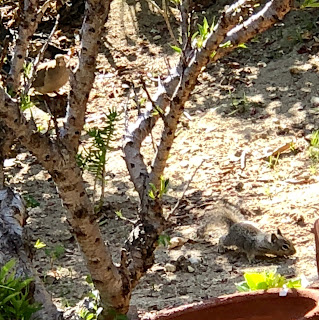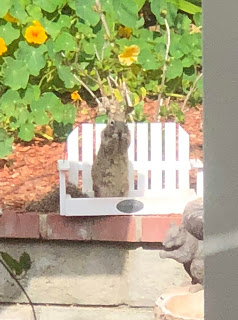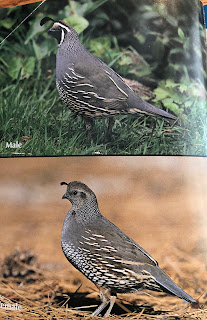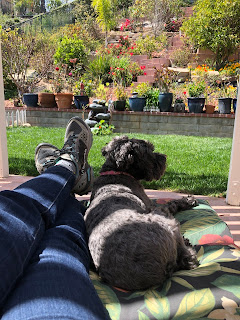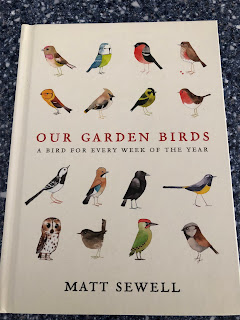I am absolutely charmed by this little gray bird with a short crest. Its peculiar name, Titmouse, is thought to be derived from the 14th century Old English word for bird, mase, and tit, meaning small. Small it is at 5 inches. Compared to most of the birds at my feeder, it is tiny and delicate, flitting in and out, and never staying put for very long. It clearly doesn't like a crowd, but instead stops at the feeder whenever it has a chance to eat alone. If other birds come along, it flutters away to the trees and neighboring yards, reappearing only when it has a chance to dine in solitude.
I was pleasantly surprised to learn that not only do these little birds mate for life, but unlike many other birds, male and female look exactly alike. This is one male that has no need for fancy colored plumage. He also allows his mate to select her nest site and to decorate it however she pleases. He accompanies her and helps where needed, but pretty much lets her call the shots. Once she is planted inside her nest cavity, roosting or incubating, he feeds her. When the babes are born, they both feed and tend to the 6-8 hatchlings until they fledge in 16-21days. What more can a woman want? And what a great partnership.
 |
I have yet to see two titmice in the feeder at the same time.
Always only one solitary little bird.
|
I have seen this little bird at my seed feeder often, but always alone. Perhaps his mate has been busy at her nest, or perhaps I've seen them both at different times and thought they were one and the same; after all, they have identical coloring. But today, for the first time, while this one was at the feeder, I saw another in the trees behind, flitting from branch to branch. So he wasn't alone after all. I had also heard that their little legs were so strong they can hang upside down--and today I witnessed that too, as the little bird clung to the bottom of the feeder, literally upside down, searching for hidden sunflower seeds. Apparently there weren't any left, for within seconds, both birds took off and disappeared. I tossed more seed in, but they didn't return. Titmice are constantly moving, foraging for seeds, berries, and acorns or searching for insects--some that they catch in mid-air.
I think I know why I am so charmed by these birds. They don't travel much, staying close to home: Found in warm dry woodlands throughout much of California, titmice don't migrate but stick around defending their home territory year round. They are not terribly social: Not the type to form flocks, they are found mostly in pairs and sometimes in small groups. In short, I like their style. These little gray birds, who mate for life, prefer keeping it "just the two of us." That warms my heart.
https://www.allaboutbirds.org/guide/Oak_Titmouse/lifehistory
https://www.audubon.org/field-guide/bird/oak-titmouse
https://watchingbackyardbirds.com/wbbsite/article/adorable-titmice.php




